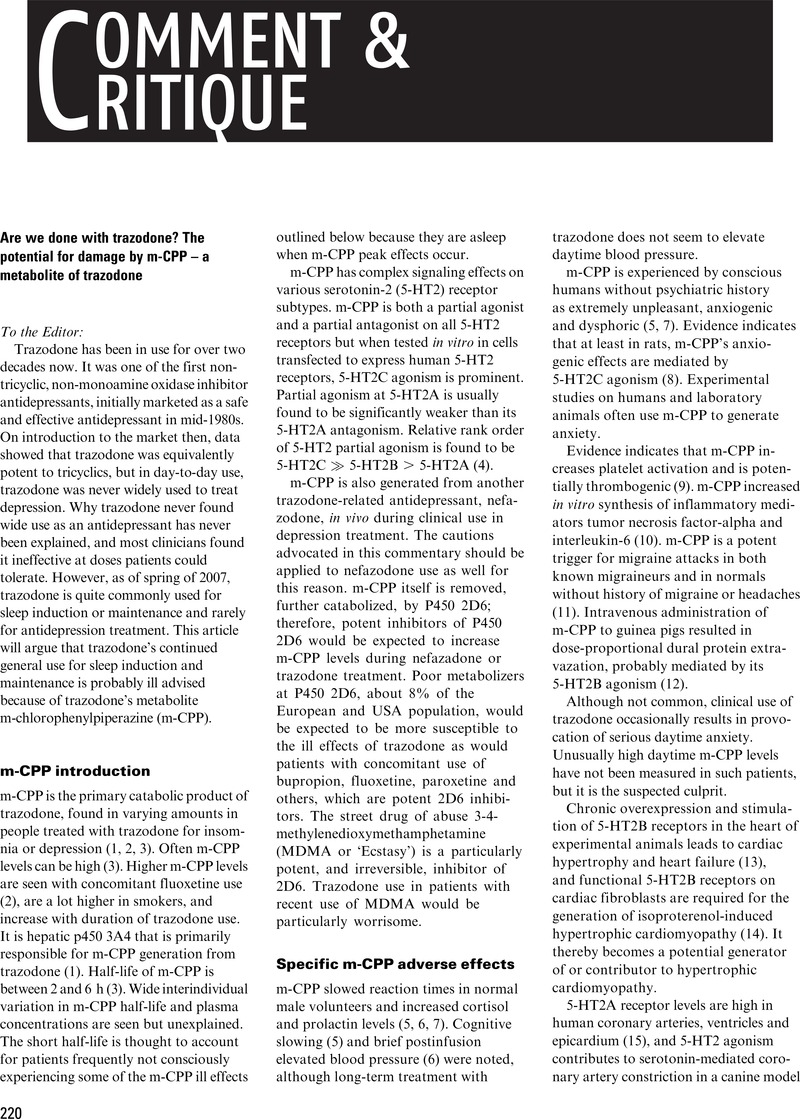Crossref Citations
This article has been cited by the following publications. This list is generated based on data provided by Crossref.
Kast, Richard E.
2009.
Trazodone generates m-CPP: In 2008 risks from m-CPP might outweigh benefits of trazodone.
The World Journal of Biological Psychiatry,
Vol. 10,
Issue. 4-2,
p.
682.
Gaillard, Yvan P.
Cuquel, Anne‐Claire
Boucher, Alexandra
Romeuf, Ludovic
Bevalot, Fabien
Prevosto, Jen‐Michel
and
Menard, Jean‐Marie
2013.
A Fatality Following Ingestion of the Designer Drug Meta‐Chlorophenylpiperazine (mCPP) in an Asthmatic—HPLC‐MS/MS Detection in Biofluids and Hair.
Journal of Forensic Sciences,
Vol. 58,
Issue. 1,
p.
263.
Abrams, Kenneth B.
Folger, Isabel T.
Cullen, Nancy A.
and
Wichlinski, Lawrence J.
2024.
Biochemical challenges for testing novel anti-panic drugs in humans.
Pharmacology Biochemistry and Behavior,
Vol. 242,
Issue. ,
p.
173825.



